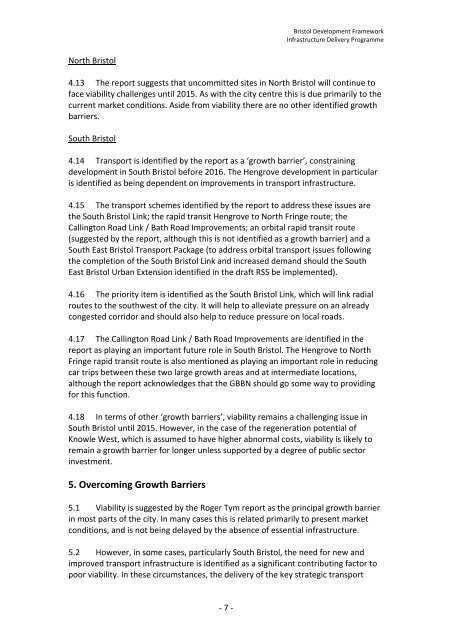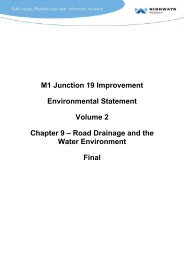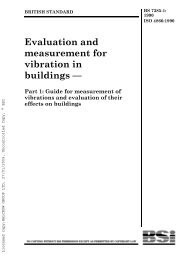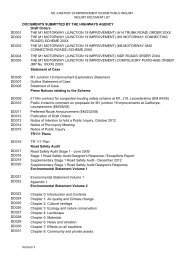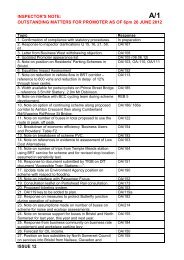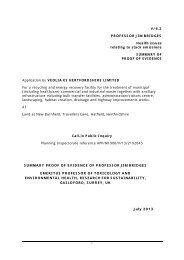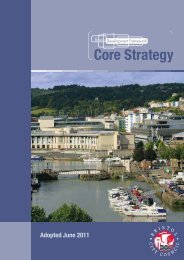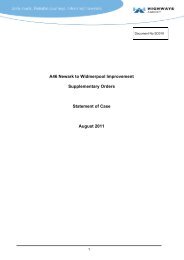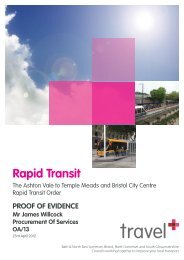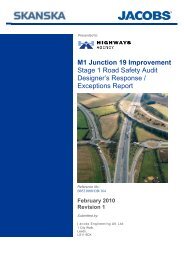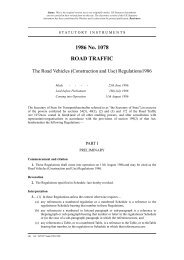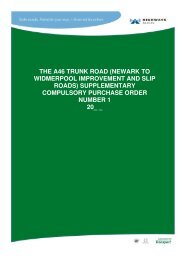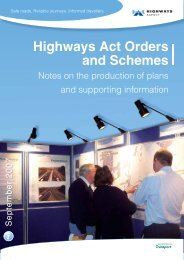Bristol Development Framework Infrastructure Delivery Programme
Bristol Development Framework Infrastructure Delivery Programme
Bristol Development Framework Infrastructure Delivery Programme
Create successful ePaper yourself
Turn your PDF publications into a flip-book with our unique Google optimized e-Paper software.
<strong>Bristol</strong> <strong>Development</strong> <strong>Framework</strong><br />
<strong>Infrastructure</strong> <strong>Delivery</strong> <strong>Programme</strong><br />
North <strong>Bristol</strong><br />
4.13 The report suggests that uncommitted sites in North <strong>Bristol</strong> will continue to<br />
face viability challenges until 2015. As with the city centre this is due primarily to the<br />
current market conditions. Aside from viability there are no other identified growth<br />
barriers.<br />
South <strong>Bristol</strong><br />
4.14 Transport is identified by the report as a ‘growth barrier’, constraining<br />
development in South <strong>Bristol</strong> before 2016. The Hengrove development in particular<br />
is identified as being dependent on improvements in transport infrastructure.<br />
4.15 The transport schemes identified by the report to address these issues are<br />
the South <strong>Bristol</strong> Link; the rapid transit Hengrove to North Fringe route; the<br />
Callington Road Link / Bath Road Improvements; an orbital rapid transit route<br />
(suggested by the report, although this is not identified as a growth barrier) and a<br />
South East <strong>Bristol</strong> Transport Package (to address orbital transport issues following<br />
the completion of the South <strong>Bristol</strong> Link and increased demand should the South<br />
East <strong>Bristol</strong> Urban Extension identified in the draft RSS be implemented).<br />
4.16 The priority item is identified as the South <strong>Bristol</strong> Link, which will link radial<br />
routes to the southwest of the city. It will help to alleviate pressure on an already<br />
congested corridor and should also help to reduce pressure on local roads.<br />
4.17 The Callington Road Link / Bath Road Improvements are identified in the<br />
report as playing an important future role in South <strong>Bristol</strong>. The Hengrove to North<br />
Fringe rapid transit route is also mentioned as playing an important role in reducing<br />
car trips between these two large growth areas and at intermediate locations,<br />
although the report acknowledges that the GBBN should go some way to providing<br />
for this function.<br />
4.18 In terms of other ‘growth barriers’, viability remains a challenging issue in<br />
South <strong>Bristol</strong> until 2015. However, in the case of the regeneration potential of<br />
Knowle West, which is assumed to have higher abnormal costs, viability is likely to<br />
remain a growth barrier for longer unless supported by a degree of public sector<br />
investment.<br />
5. Overcoming Growth Barriers<br />
5.1 Viability is suggested by the Roger Tym report as the principal growth barrier<br />
in most parts of the city. In many cases this is related primarily to present market<br />
conditions, and is not being delayed by the absence of essential infrastructure.<br />
5.2 However, in some cases, particularly South <strong>Bristol</strong>, the need for new and<br />
improved transport infrastructure is identified as a significant contributing factor to<br />
poor viability. In these circumstances, the delivery of the key strategic transport<br />
‐ 7 ‐


